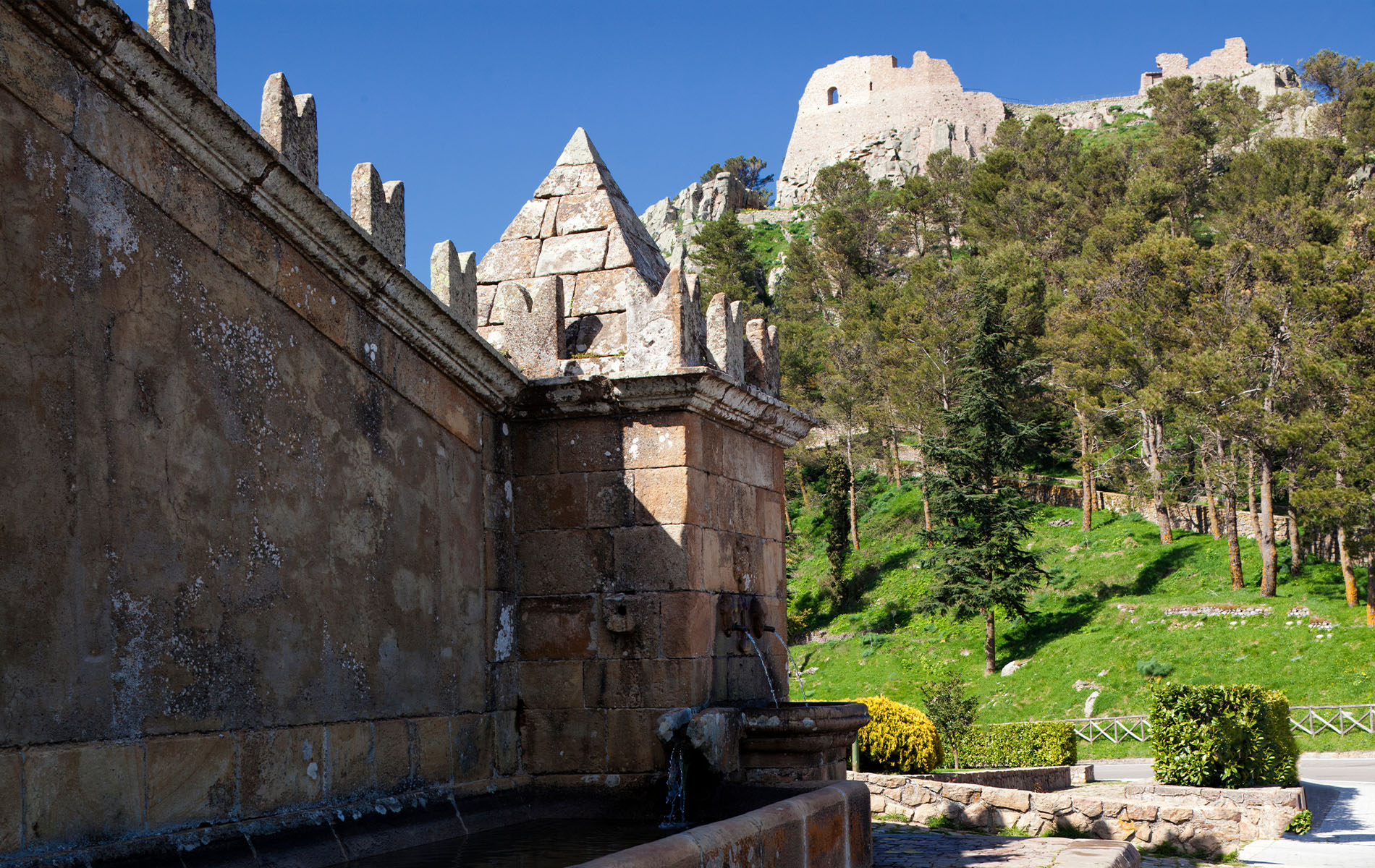Geraci Siculo is a municipality of just over 1,800 inhabitants in the province of Palermo and is considered to be one of the most beautiful villages in Italy.
Its name derives from the Greek jerax (vulture), as the mediaeval locality originally stood on a fortress that was flown over by vultures.
Geraci Siculo is characterised by many narrow, winding streets that lead up to the ruins of the Ventimiglia Castle, located on a massive sandstone rock. This was a purely military site, with the purpose of protecting the place from enemy attacks. The name of the castle derives from the Ventimiglia family: when Henry II of Ventimiglia, a member of the House of Frederick II, was appointed Count of Geraci in 1258, he made the town the capital of the Madonie, a title that remained intact until the early 15th century.
Among the many churches that dot the town, we find the Mother Church of Santa Maria Maggiore, an example of a Sicilian-Arabic Romanesque style building, although inside it has Baroque elements. Facing the main square, the exterior façade features an original ogival stone portal, while other elements such as the rose window were added later. The interior consists of three naves, while each side chapel has a different stucco decoration. Among the particular works present are the statue of the Madonna della Neve, a precious testimony of 15th-century Sicilian sculpture in white marble; the reliquary of St Vincent Martyr, of Spanish workmanship; and finally the chapel of Purgatory, which has the oldest stucco decoration, dating back to the early 18th century.
The Church of St Anne, on the other hand, is considered the ancient chapel of the Ventimiglia family, as attested by a plaque inside the chapel. The altar has a canvas depicting the Nativity of Mary, attributed to Giuseppe Salerno, nicknamed ‘the lame of Ganci’.
The Church of Santo Stefano, now serving as an auditorium, is characterised by a bell tower with polychrome ashlars; here too we find a work by Giuseppe Salerno, depicting the life of the saint in eight panels.
In 2014, the Salto del Ventimiglia was inaugurated, a panoramic overlook in the historical centre consisting of a glass walkway extending three metres from the rock, built on the spot where, according to history, Francis I Ventimiglia threw himself and his horse to escape enemy troops.
For a complete experience in Geraci Siculo, it is advisable to visit the municipality during one of several traditional local festivals.
Among the most important are the feast in honour of Maria SS. Annunziata and the feast of the shepherds; the former celebrates the liberation from the cholera disease by the grace of Maria Annunziata; the latter is celebrated every seven years and is nicknamed ‘A carvaccata di Vistiamara’: on this occasion, the shepherds ride through the streets of the town to the Mother Church, while singing. Another typical festival is the ‘Giostra dei Ventimiglia’, characterised by falcon displays in hunting simulations.




